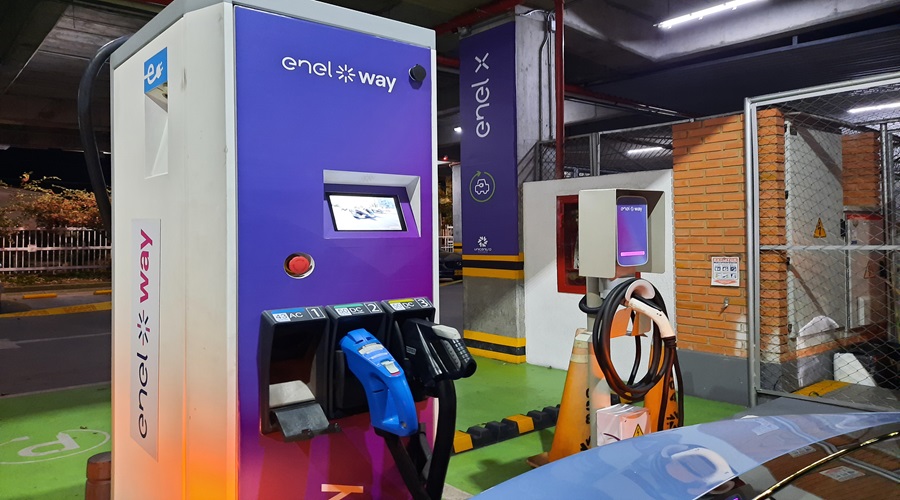In 2021, the Ministry of Mines and Energy of Colombia regulated the connectors of charging stations through Resolution 40223.
It was established that charging infrastructures must include at least one Type 1 (AC) connector and CCS Combo 1 (DC) connector to ensure uniformity in service, but the situation regarding electrified vehicles was not specified.
What does this mean? The regulation did not include provisions for the connectors of electric and plug-in hybrid vehicles, leaving the choice to importers and dealerships.
As a result, at least seven different types of connectors coexist in Colombia, creating challenges for users and companies implementing charging infrastructure.
A Fragmented Market and Additional Costs
In the absence of clear regulation, companies installing charging stations opt to diversify their offerings to cater to as many users as possible.
Today, in addition to the official standards, it is also common to find Type 2, GBT, and CHAdeMO connectors.
Akuai Energy, a company in the sector, points out that this technological dispersion increases investment costs and slows down the expansion of charging infrastructure.
“For the business model to be sustainable, it is necessary to offer multiple connector options, which implies higher investments,” they warn.
For users, this lack of unification also impacts the user experience.
The availability of connectors is not always uniform, which can cause delays in vehicle charging.
“Drivers sometimes have to wait longer because their connector is the most used at a station,” explains Akuai Energy.
As a solution, some owners purchase adapters or converters to ensure compatibility with different charging points.
Why Were Vehicles Not Regulated?
Despite the standardisation of charging infrastructure, the Colombian government did not impose a single criterion for connectors in vehicles.
This means that each distributor decides which standard to use, which keeps the ecosystem fragmented.
Óscar Martínez, CEO of Colombia EV, believes the issue is legislative: “Each distributor decides which connector they sell, and in the short term, I don’t see this being regulated. However, this freedom has helped energise the market, as there is a wider range of available options.”
This diversity allows more brands to enter the Colombian market without restrictions due to charging compatibility. However, this also presents challenges for the mass adoption of electric mobility in the country.
Standardisation as Key to Expansion
Industry experts believe that regulation establishing a standard connector for electric vehicles could improve the user experience and accelerate the adoption of this technology in Colombia.
“If all low and zero-emission vehicles had the same connector standard, charging infrastructure could expand more efficiently, without the need for multiple investments,” said representatives from Akuai Energy.
How Did Electromobility Start the Year in Colombia?
According to data from Colombia’s National Traffic Registry (RUNT), electric vehicle registrations increased by 345% in January compared to the same month the previous year, with 966 units registered.
In 2025, Colombia’s zero-emissions vehicle market continues to be led by Chinese brands, with BYD at the forefront.
BYD accounted for 49% of total electric vehicle registrations in January, with the BYD Yuan Up and BYD Seagull leading the way, both of which also dominated throughout 2024.
Other brands that achieved significant market share included Volvo (9.5%) and Kia (9.5%), followed by Zeekr (5.5%) and BMW (3.2%).
The five best-selling models in the first month of the year were:
- BYD Yuan Up (29.4% market share)
- BYD Seagull (17.2%)
- Kia EV5 (8.8%)
- Volvo EX30 (7.1%)
- Zeekr X (4.5%)
These five models accounted for 67% of the total electric vehicle registrations in January 2025, showcasing the consolidation of Asian brands in the local market.
Read more: Colombia: Between a US-Aligned Charging Infrastructure and China’s Dominance







